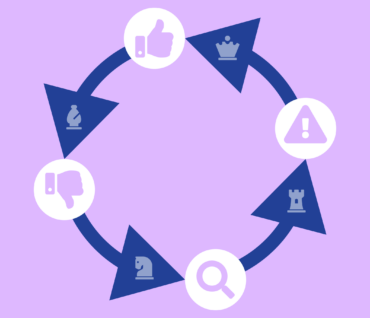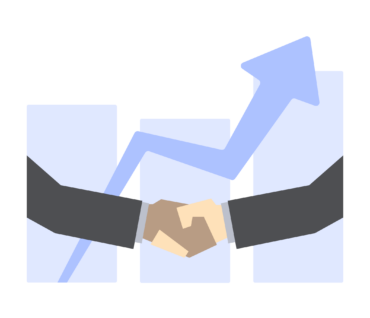
Get Started
Graphite's supplier management tool helps you onboard faster, cut time on risk reviews and streamline supplier validations. Save time and money.
November 30 2022
5 Best Practices for Building a Top-Notch Strategic Sourcing Team
Procurement is rapidly shifting from a behind-the-scenes function to a highly visible and influential part of the business that’s focused on driving innovation and value. To unlock more opportunities, procurement teams must be prepared to take on roles that go beyond traditional purchasing and contract management, shifting their focus instead to a more strategic sourcing process.
By following a strategic approach, procurement departments can deliver more savings, increased value and build a better procurement reputation across their organizations. Consider these five essential steps to grow your influence and earn a seat at the stakeholder’s table where you can be more involved in strategic decision-making.
1. Engage with the Business to Deliver the Greatest Impact
Any successful strategic sourcing team wants to understand how the business operates, any challenges, and where there are opportunities for continuous improvement, cost savings, and innovation.
Begin by seeing your suppliers as assets. Which suppliers and companies you choose to work with can either help you achieve your goals or drive you farther away from them.
They can be strategic allies to your business as well. Your suppliers are experts in their industries just as you are in yours. Working together you can find innovative solutions that benefit you both.
Danielle Salyers, 2nd Vice President of Strategic Sourcing at Allied Solutions says, “When we work together efficiently and share that knowledge, we deliver the greatest impact to the business and, ultimately, to our clients.”
Help stakeholders identify objectives
To build trust, meet regularly with your stakeholders to understand their objectives. Consider the following questions to clarify how you can best help them:
- What is your vision?
- What pain points do you have right now?
- How can we bring you the right suppliers?
By asking these questions, you show that you’re invested in their success and want to help. The next step is to figure out how you’re going to solve the problem and then deliver on it. “Just be curious and listen,” Salyers advises.
2. Ask Questions (and Listen) to Build Trust
Curiosity sets the average procurement professional apart from a strategic sourcing team expert. Salyers advises teams to seek the answers to questions. “The more curious you are, and the more information you have, [that’s when] things start to connect. You’ll have the right piece of information at the right time.”
Don’t be afraid to ask questions. Speak up if you don’t understand something. Good suppliers will be open to educating you on the goods or services when you’re trying to negotiate contracts. Likewise, your business associates will be happy to talk with you.
As you listen to your stakeholders, we recommend creating a straightforward process for the various stages of your supplier lifecycle. Then, with a strategy in hand, your stakeholders will begin to know what to expect as they engage with your team and will see your team as less of a roadblock in the sourcing process and more of a valuable resource to your company.
3. Join Industry Groups for Continuous Improvement
Get involved with groups to make new connections, discuss challenges and recent developments in the procurement industry, and share ideas.
Institute for Supply Management (ISM) is a helpful resource you can draw from to grow your knowledge. ISM covers every supply chain area, so that will be a stretch for many procurement professionals. Made up of national and local chapters, this industry group opens career paths by providing information about other areas of supply chain.
ISM offers two different certifications:
- Certified Professional and Supply Management (CPSM) is a series of three four-hour tests. You must complete all three tests within one year to earn your certificate.
- Certified Professional and Supplier Diversity (CPSD) is an add-on test you can take once you have your CPSM.
Procurement Foundry is another valuable educational resource for those seeking a network of like-minded professionals. It consists of multiple channels or categories you can engage with, from indirect and direct spend, to procurement technology, market research, RFPs, and more.
Specific suppliers have different messaging groups you can join. If you have questions, you can connect with peers invested in the same topics to share knowledge.
4. Find Suppliers Willing to Invest in You
Strategic sourcing team experts don’t just partner with internal stakeholders. They also focus on creating mutually beneficial partnerships with suppliers. That doesn’t always mean suppliers with the lowest costs are the best for your business.
“When you attack someone looking for the lowest price, you’re not setting yourself up for a true partnership. Instead, I’m looking for suppliers who want to partner with my organization and improve us,” says Salyers. “I want them to be as invested in our success as our employees are. I’ve found that a partnership mindset leads [a procurement team] to be most successful.”
So, how do you identify this in your initial purchase or contract negotiations with a potential partner? How do you determine if your prospective supplier is trying to give you the best service possible or just checking boxes to earn a commission?
Hold discovery meetings
Remember, good supplier relationships don’t just happen in a single interaction, says Salyers. They develop through a series of repeated discovery meetings.
Ask questions. You already know the objectives of the business unit you’re working with. How will that particular supplier help you achieve those goals? During these discussions, you’ll find out if your potential suppliers are genuinely committed to providing excellent service or just going through the motions to secure a commission.
Run business reviews with your top suppliers
Once you’ve selected your supplier(s), you want to be sure you’re receiving the best level of service. One way to determine this is by holding regular business reviews with your best suppliers. It’s likely that you already have a supplier management process in place. Still, if not, we recommend creating a standard template of the items needed to get a complete picture of the supplier’s efficiency and performance.
Collect supplier data
Collect qualitative and quantitative data from your internal business units on metrics like on-time delivery, incident rate, quality of service, impact of the supplier, cost savings, efficiency, and any other relevant metrics. Then, request that your supplier answer questions such as:
- What are you doing to keep our costs down?
- What innovations or process improvements have you delivered to us in the last two years?
- How do you know you’re a good supplier for our company?
Data collection and analysis from your business units and the supplier is critical to truly understand and manage the supplier’s performance. Ultimately, it all boils down to accountability—not only holding your suppliers accountable but holding your organization just as accountable. When suppliers see that, they’ll know you’re a good customer and will do their best to bring value to the relationship.
5. Position your team to have a high say-do ratio
Lastly, you must adequately position your procurement staff to efficiently deliver on the agreed-upon objectives. It’s not about adding work; you don’t want to risk an overload or burn out your staff. Instead, set up your team with the tools and know-how to actively participate in those stakeholder conversations.
Train them to ask the right questions and act on those items they can help with. Having a high say-do ratio strategy is about delivering on your commitments. In addition, a high say-do ratio builds trust and relationships, a pivotal characteristic of a strategic sourcing organization.
Transform your Team into Strategic Sourcing Experts
Exposing your team to your organization’s various business units will expand their knowledge so they begin to shape those important conversations with stakeholders. They can then take what they’ve learned and translate that knowledge into smart sourcing contracts with suppliers. As a result, your team will become a trusted and reliable partner that is increasingly involved in more and more company decision-making.
Ready to advance your procurement team to the next level?
To know how to get to your desired end state, you have to first understand where you currently stand. Find out where you are on the procurement maturity scale.
Read Article




